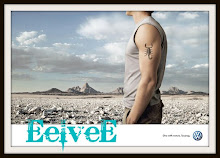
Korean director Kim Ki-duk's career can easily be divided into two distinct phases. There are the early, gritty films — aesthetically and thematically rough, and leaden with disturbing violence and a healthy dose of misogyny. Then there are the more recent entries — the festival and art-house friendly titles, with gorgeous actors and matching cinematography, and only a fraction of the misogyny. Though some have argued otherwise, I'm convinced that the newfound attention from Western audiences had a tremendous impact on Kim's vision, as if his films were being sculpted to meet the approval of foreign eyes. Spring, Summer, Fall, Winter...and Spring and 3-Iron are Asian films that appealed to people who normally don't care for (or see) Asian films. Full of sumptuous images that signify nothing, and just enough "oriental" mystique to keep foreign audiences intrigued, but not so much as to make it impenetrable or intimidating. (That many viewers and critics considered Spring, Summer, Fall, Winter...and Spring to be a Buddhist parable speaks volumes to this point. Kim is a Christian, and admittedly knows nothing about Buddhism.) But whereas Western audiences flocked to see Spring.... and 3-Iron (it landed on more than few Top Ten lists), the folks back at home weren't buying it — 3-Iron was ranked 59th of the year at the Korean box-office, with Spring... faring not much better. And though it was wonderful to see a Korean film walk away with the Silver Bear at the 2004 Berlin Film Festival, I would have much rather seen it given to Hong Sang-soo's sublime Woman is the Future of Man over Kim's ode to teenage prostitution, Samaria.
As depraved, unpleasant and (at times) offensive as they are, Kim's earlier films are far more interesting than the polished ones, and in their own unique way say quite a bit about Korean ideas of masculinity. True, the women in his films are almost invariably some type of whore, but it's never been clear if the rampant misogyny is Kim's own, or merely a conceit by which to deliver his message about Korean male attitudes towards women. (For a perfect example, see Bad Guy.)
In 2000, Kim tried his hand at something slightly more experimental. Working with ten cameramen, he shot a feature film in slightly over three hours, without a single retake. The resulting eighty-minute film, Real Fiction, can best be described as an interesting failure. The film opens on a promising, wonderful, lengthy sequence that calls to mind such films as Blow Up and The Conversation. A sketch artist is drawing portraits in a crowded city park. The camera is kept at an almost voyeuristic distance, and passerby walk through the shot, oblivious to what is taking place. (A PA dashes into frame at one point to move a couple who are blocking the shot — a nice touch.) Multiple layers of dialog are heard, including a conversation in a phone booth — it's as if the entire park was miked. A young woman with a video camera films the artist, though he doesn't acknowledge her presence. At times the POV will shift to her camera — is she a character, or is this a bit of intentional reflexivity? (Or perhaps both?) Some street thugs harass the artist, and demand money from him. A customer refuses to pay for her portrait and storms off. With a somewhat documentary feel to it, Kim seamlessly blends fiction with reality, and the impromptu responses from the crowd provide a genuine bit of energy to the scene.

Unfortunately, it's all downhill from there. After being dragged into an empty theater by the woman with the camera, the artist meets his antipode, and this dark, masturbating, rage-driven version of himself convinces the artist to take revenge on those who have ever wronged him. What we are left with is a rather straightforward slasher/revenge film, though of the basest kind — it's more Falling Down than Sympathy for Mr. Vengeance. Ex-girlfriends that wouldn't sleep with him, current girlfriends who are cheating on him, military men who abused him — such are the trivialities that send him on his killing spree. The experimental framework that was so interesting at the beginning of the film is sadly pushed aside for what winds up looking like any low budget thriller, complete with a cloying synthesizer score that seems well out of place. The continual shift from film to video would indicate the presence of the woman with the camera, though logistically it seems impossible in some scenes. Has she now become a distant observer, or is the film/video split simply meant to signify the difference between truth and fiction? There are too many inconsistencies to say for sure.
The single-take aspect of the film is interesting, and it's amusing to watch the actors recover from minor gaffes, but even that grows tired after a while. The reappearance of the woman with the video camera late in the film once again raises some questions of reflexivity, but it's nothing that hasn't already been done in films like Man Bites Dog. After eighty-minutes, the act of questioning what is and isn't real no longer holds any interest. But do we really need to hear Kim's "CUT" to remind us that we've just been watching a film?
Real Fiction suffers from being neither fish nor flesh — it too quickly abandons its experimental roots in favor of a puerile narrative that ends on the most tired of clichés. Yet even as a failed effort it is more satisfying than the faux-depths and pretty pictures that make up 3-Iron.
March 31, 2006 in Film
source:#####

No comments:
Post a Comment